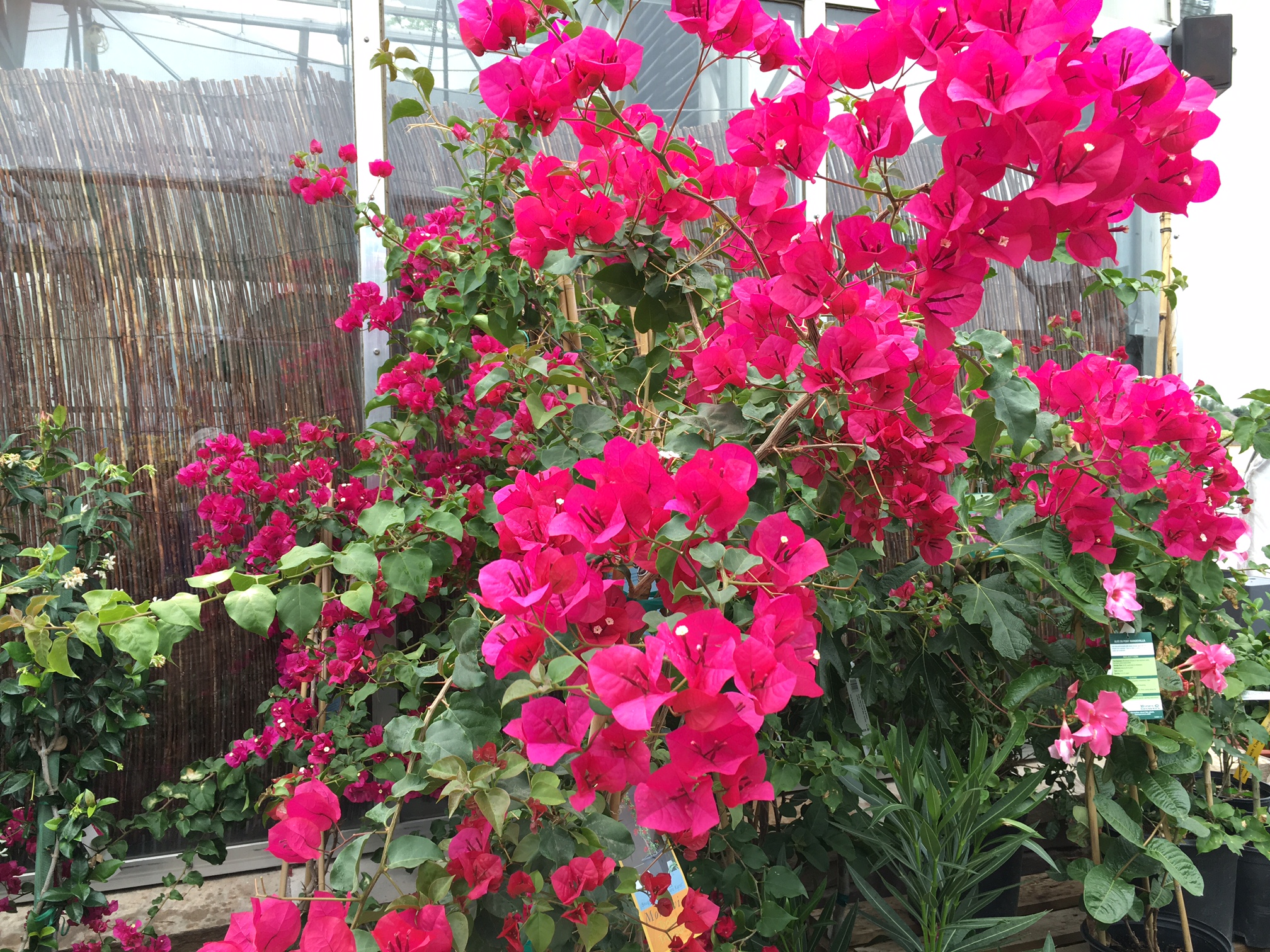If you can’t bear to part with your outside plants, there is hope! The plants listed below will not survive outside during Colorado’s winter weather. But with a little care, can be nurtured inside and then place back outside next year:
Begonia, Bougainvilla, Citrus, Coleus, Ficus, Gardenia, Geranium, Hibiscus, Impatiens, Mandevilla, Passion Flower, Pentas, Rosemary
Location
Many gardeners know that heartbreaking feeling that comes with autumn frosts. The end of the season does not have to mean a painful parting with plants, however. You can move many of your favorite container annuals and tropical plants inside, where they’ll survive as houseplants until spring.
Before you move your plants, be sure you have the right location. The majority of varieties need a bright spot (as most grow in full sun outdoors). They also like extra humidity; indoor air is typically dry and the leaves will turn brown and crispy if there’s not enough moisture in it.
Although most plants prefer a cool location — in the 60s during the day and 10 degrees lower at night — they will tolerate warmer conditions.
Pests
A little extra care before you move the plants in will help them cope with the transition. First, check carefully for pest problems (i.e. fungus gnats, spider mites, aphids, mealybugs or others) and remove them if present. If you’re not squeamish, remove the pests manually. The next step would be to utilize an indoor product like insecticidal soap or horticultural oil, which specifically targets these pests.
Pruning
Once pests are under control, cut the plant back slightly (never more than ⅓ of plant volume); this helps control size and encourages new growth that will be better adapted to life indoors. (Repeat the process in spring when you take the plants back outside, to help them acclimate to being outdoors again.)
If you want to bring a plant that was growing in the ground (versus in a container), you will need to pot it first. Choose a container with drainage holes and fill it with a potting mix designed for containers. Do not use regular garden soil. It does not drain well and can harbor insects or disease. Knock off the garden soil from the roots to discourage pests.
Winter Care Tips
Remember, many common houseplants are native to jungle conditions. Once your plants are indoors, water them enough so they do not completely dry out. Remember, they do not need as much water as during the growing season. They typically will not need fertilizer, either. Think of their indoor time as a rest period.
If during their stay indoors they develop brown tips on their leaves, the following might be the culprit: poor watering habits (too much or too shallow), buildup of salts from too much fertilizer or from softened water, or lack of humidity. The best way to water a houseplant is to thoroughly flush it until water runs freely out the drainage holes. If you use softened water, switching over to distilled water will help alleviate harmful salt build up around the root zone and around the sides of the container.

